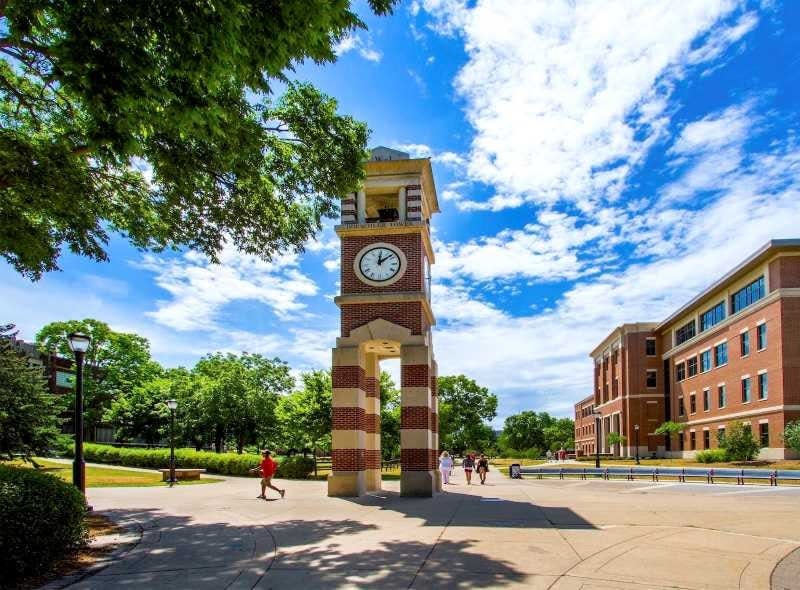UW System enrollment holds steady, with most universities reporting modest declines

Enrollment largely held steady at most of Wisconsin's public universities this fall, bucking a downward trendline that has plagued institutions across the demographically challenged Midwest.
The campus-by-campus breakdown, however, shows many of the state's smallest schools continuing to lose students, according to preliminary numbers released Thursday. Three of the 12 branch campuses each have fewer than 300 students, raising questions about how — or if — they should continue to operate in their current form.
University of Wisconsin System President Jay Rothman was encouraged by the overall numbers, which showed enrollment grew from the previous year for the first time in nearly a decade. But remove UW-Madison from the picture and enrollment across the 12 universities and branch campuses dropped by 128 students.
Rothman attributed much of the stability to a 3% increase in freshman enrollment across the UW System, excluding the state flagship.
"I think these figures represent and reflect the value that students and parents put on a UW System education," Rothman told reporters in a Thursday briefing. "I think they appreciate our affordability and our accessibility, and (our universities) will change the lives of those students who will become graduates and do great things both in the state of Wisconsin and beyond."
Which campuses gained students? Which lost?
UW-Madison gained more than 600 students, a 1% increase. UW-Green Bay, which has grown in each of the past eight years, also saw enrollment grow by 1%.
More surprising were 3% enrollment increases at UW-Platteville, UW-Stevens Point and UW-Whitewater.
UW-Stout and UW-Oshkosh took the largest hits, losing 4% and 2% of students compared to last fall. UW-Milwaukee is down 1%, or 285 students.
How is enrollment at UW branch campuses?
Long operated as two-year launchpads for students to start a four-year degree, UW System branch campuses have struggled to fill seats for more than a decade.
The UW System placed the branches under the oversight various four-year schools in 2018 as a way to keep them open. Since then, most have lost a significant number of students.
One of the branches, UW-Platteville Richland, essentially closed at the end of last school year after enrollment dipped to just 60 students.
A few branches saw enrollment increase compared to last fall: UW-Green Bay Manitowoc, UW-Platteville Baraboo Sauk County, and UW-Whitewater Rock County.
Asked whether he's provided assurances to counties that their local campuses won't close, Rothman didn't directly answer the question. He said he's talking with chancellors and counties on finding "the best path forward."
"We are committed to our access mission, but we also have to be mindful of our financial stewardship and also the student experience on those campuses," he said. "But we want to continue to serve the state well, and the conversation will continue."
There's been a lot of talk about cuts and furloughs at some universities. Do these numbers change anything?
UW-Oshkosh faces an $18 million deficit. The university will lay off 200 employees and furlough remaining staff over this school year.
Two others, UW-Platteville and UW-Parkside, are considering furloughs and layoffs to address their own deficits.
The latest enrollment numbers are unlikely to stave off or reduce the severity of the measures taken at UW-Oshkosh, Rothman said.
"The actions that the universities are taking to alleviate their structural deficits, it's not a year-by-year exercise," he said. "We are looking at the long term to make sure that we're making the structural changes that are necessary to make sure that all of our universities are viable and sustainable, not for just the current generation but for generations to come."
What are UW campuses doing to stem enrollment declines?
Campuses are trying a variety of strategies to bring in new students.
UW-River Falls, for example, beefed up its extracurricular options by reinstating men's basketball, adding men's soccer and relaunching the marching band, which was cut in 1990 for budget reasons.
The university also launched a new therapy dog training program. Students will live with the dogs in dorm rooms as part of their training the pooches to be service animals.
Other universities are expanding dual enrollment programs, which allow students to pursue an associate degree while still in high school.
New this year for all universities is the Wisconsin Tuition Promise, which offers full tuition coverage for new in-state students whose family income is below $62,000. (UW-Madison launched a similar program on its own in 2018 and is not part of the statewide promise program.)
Contact Kelly Meyerhofer at kmeyerhofer@gannett.com. Follow her on Twitter at @KellyMeyerhofer.
This article originally appeared on Milwaukee Journal Sentinel: University of Wisconsin System enrollment steady for fall 2023

